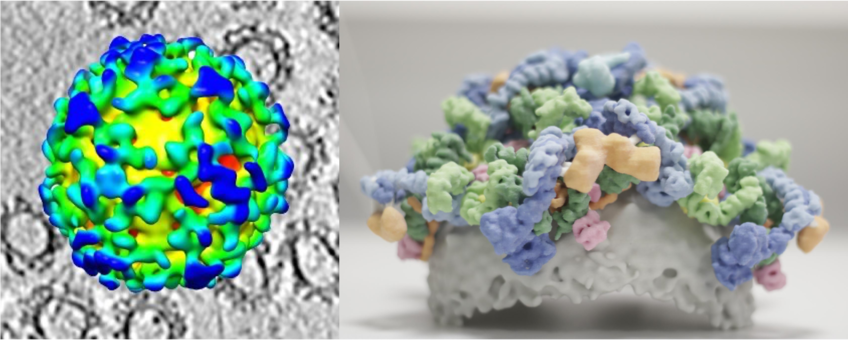Research
Enveloped viruses
Basic research into potentially pathogenic viruses is important! Viruses are also model systems for revealing and understanding fundamental biology. We are interested in the structure, assembly, and maturation of enveloped viruses, in particular HIV-1 and influenza A virus, with additional projects on Ebola virus and SARS-CoV-2. We study these processes using cryo-electron microscopy, tomography, biochemistry, and other complementary methods. We also use enveloped viruses as test systems for the development of data collection and image processing methods.

Coated vesicles
Coated vesicles transport material between the different compartments of the cell. We study how coated vesicles assemble, how they collect cargo, how they disassemble, and how these processes are regulated. To do this, on the one hand we derive structures of the vesicles within cells using “in situ” cryo-electron microscopy and tomography, and on the other hand we reconstitute vesicle assembly using purified proteins and membranes in vitro. We are interested in all of the main coat proteins, but currently focus on clathrin/AP and COPI-coated vesicles.

Development of methods
Cryo-electron microscopy and tomography are evolving fast, blurring the distinction between structural biology techniques and cellular imaging techniques. We can use these methods to find the location and spatial context of a protein complex at the same time as determining its structure, conformation and composition - within a single experiment. We are working on the development of methods in the areas of sample preparation, data collection schemes, and image processing approaches for the analysis of big datasets. We use isolated enveloped viruses, in-cell retrotransposons, and the COPI trafficking system as model systems with properties convenient for testing and validating new methods.



